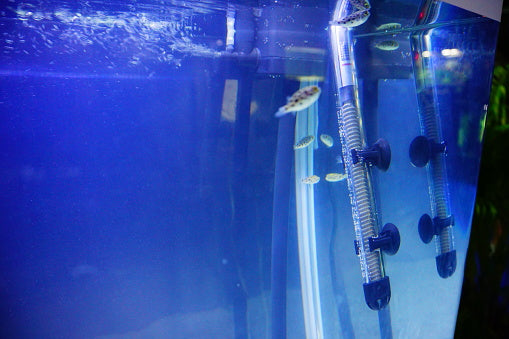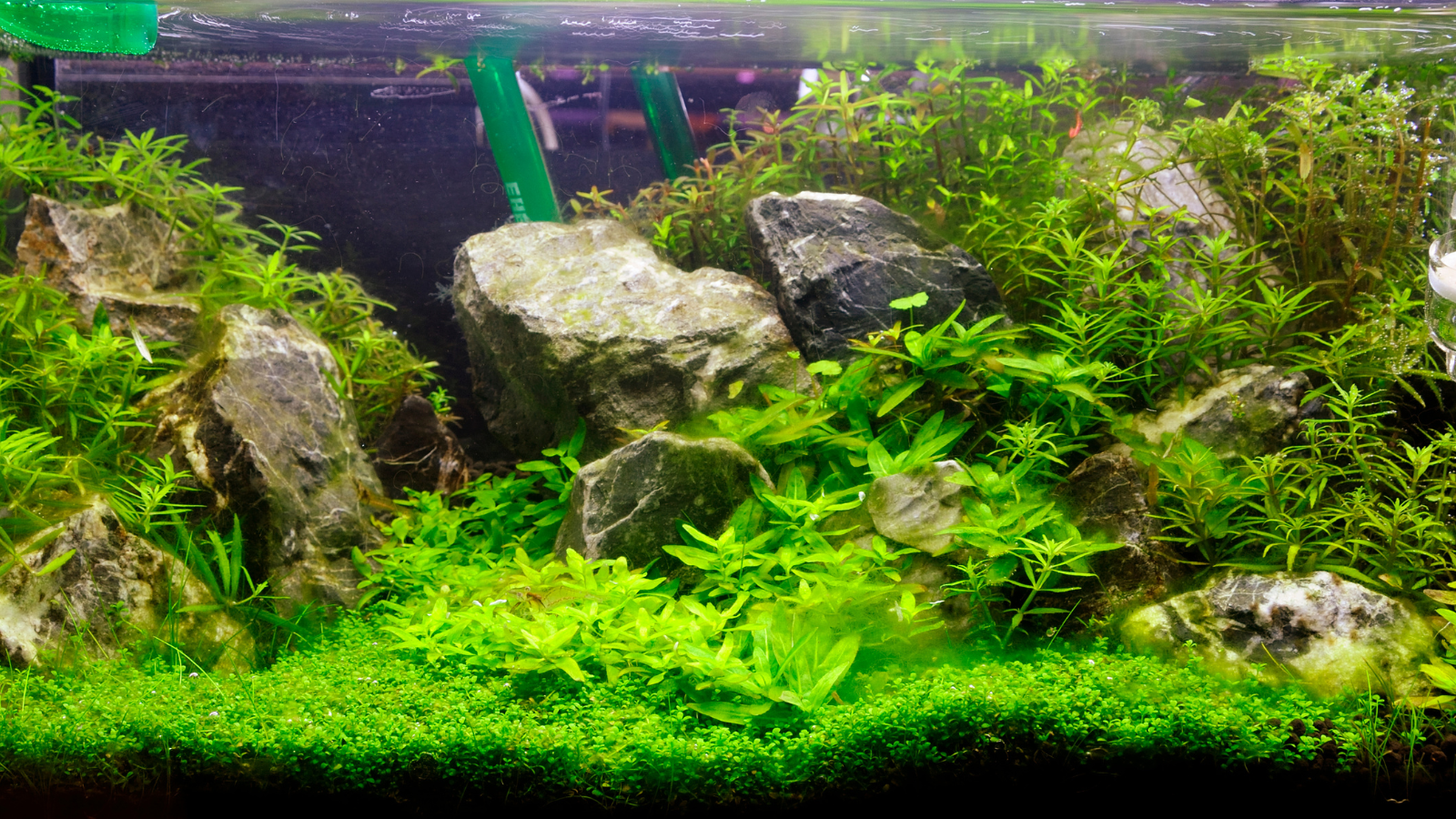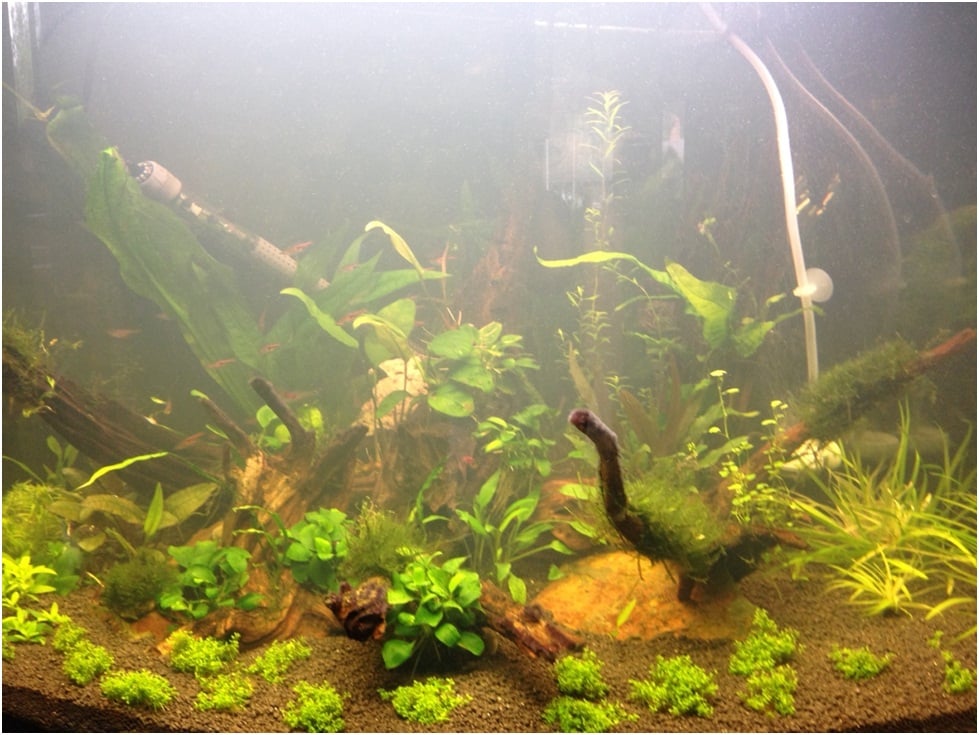
During hot days, many of us, when looking at aquariums, envy our fish constantly swimming in the water. Who wouldn't want to swim in the pool instead of sitting at work or in an overheated living room? Is it really so comfortable for the fish? Maybe during hot days it’s necessary to lower the water temperature in the aquarium?
Higher temperature means less oxygen in the water
Remember that the greatest amount of dissolved oxygen is observed in rushing and cold mountain streams. As the temperature rises, the oxygen level in the water drops. This problem affects any environment, from the pond to the home aquarium. Not all of us can afford air conditioning at home or in the apartment, and on warm summer days, the temperature in the rooms often exceeds 30⁰C.
Most of the fish are adapted to living in an environment with a temperature of 24 - 26⁰C and we consider such fish to be "standard" in aquariums. Some species prefer colder waters, e.g. rainbow shiners, Notropis chrosomus (18 - 22⁰C), others: e.g. discus or loaches prefer warmer water (26 - 30⁰C). Fish are able to adapt to some extent to temperatures other than those living in their natural environment for decades. However, it usually affects their behavior, foraging and life expectancy.
Specific heat capacity of water
Without a doubt, water is a truly amazing chemical. You can talk for hours about hydrogen bonding, dipole structure, great solvent properties, etc. Unfortunately (from our point of view), it also has a very high specific heat capacity, i.e. the heat (energy) needed to change one temperature unit of one mass unit. To sum up, if we want to raise or lower the water temperature by 1⁰C, we have to put a lot of energy into it. There are many ways to lower the water temperature. Let’s present the most popular of them, from basic to advanced.
Ways to lower the water temperature in the aquarium
-Shading the aquarium area - if the tank is in constant and direct contact with sunlight
-Opening the covers in the tanks - evaporating water gives off heat to the environment. Many people disregard this fact, fearing large losses of water associated with it, but nature tries to regulate the temperature itself in this way and it is worth allowing it.
-Shorter lighting time - even the latest types of LED lighting generate heat. On hot days, it is worth reducing the time of lighting the tank.
-Increasing the distance between the water surface and the light source - lighting, by generating heat, affects the water temperature. By hanging the lamp on the ceiling and shortening its distance in relation to the water surface, we can lower the temperature in the tank. Having an aquarium cover is also not a problem - it is enough to put small square timber with a side of 1 cm on the aquarium or similar material to "open" the entire cover.
-Fan - "blowing off" the warm air formed between the lighting and the water surface allows, according to various estimates, to lower the temperature by 1 - 2⁰C. It's a lot! We can use a room fan for this purpose, assemble the set ourselves using computer fans or purchase fan sets dedicated to use in aquariums. They have an undeniable advantage - you can direct the air flow at different angles and attach them to the edge of the tank.
-Ice - water frozen in a bottle or a fish bag, thrown into the tank will reduce the temperature. The method is laborious, but the periodic replacement of the containers brings very good results and allows the temperature to be reduced by 3 - 4⁰C.
-Aquarium cooler - the most advanced method of cooling aquarium water. The water, flowing in a spiral through the device, is cooled down to the temperature set by the aquarist. A cooler is a significant financial expense, but in the case of large tanks and / or valuable specimens swimming in an aquarium, it is often a necessary element of equipment.
Other methods and what is not really worth doing?
-Throwing ice cubes into the tank - the method may be effective in small, several-liter aquariums, prepared from RO / RODi water, and allows you to replenish the evaporated part of the liquid. However, evaporation in a small area is never large enough to only compensate for the shortages - we always encounter excess water, which is associated with its change.
-Much more frequent and intensive water changes - many people use tap water for this purpose, usually cooler by at least 10⁰C than our surroundings. It might seem that this is a cure for all evil, but the water for aquarium purposes should be treated. In addition, cooling the tank too quickly can reduce the resistance of the fish, and thus cause disease. Imagine jumping between an icy shower and a hot shower - this is how fish feel when the temperature spikes.
Let’s remember that summer is a period when there is less drinking water in the national water management. This may affect its quality and parameters. Water reaching our taps must meet the stringent standards of the governmental health institutions, but what is acceptable to humans can weaken a small home ecosystem.
Take care of the oxygen in the water
Each of the ways to deal with excess temperature has its pros and cons, and each responsible aquarist will choose the method that suits him best. Let us not forget about the more intensive oxygenation of the water, and during vacation trips we should provide the fish with the care of an experienced person and install an additional, even smaller filter. Overfeeding leads to an overproduction of metabolites, and the bacteria present in the water need a large amount of oxygen to process them, for which the demand in the tank is already high.


